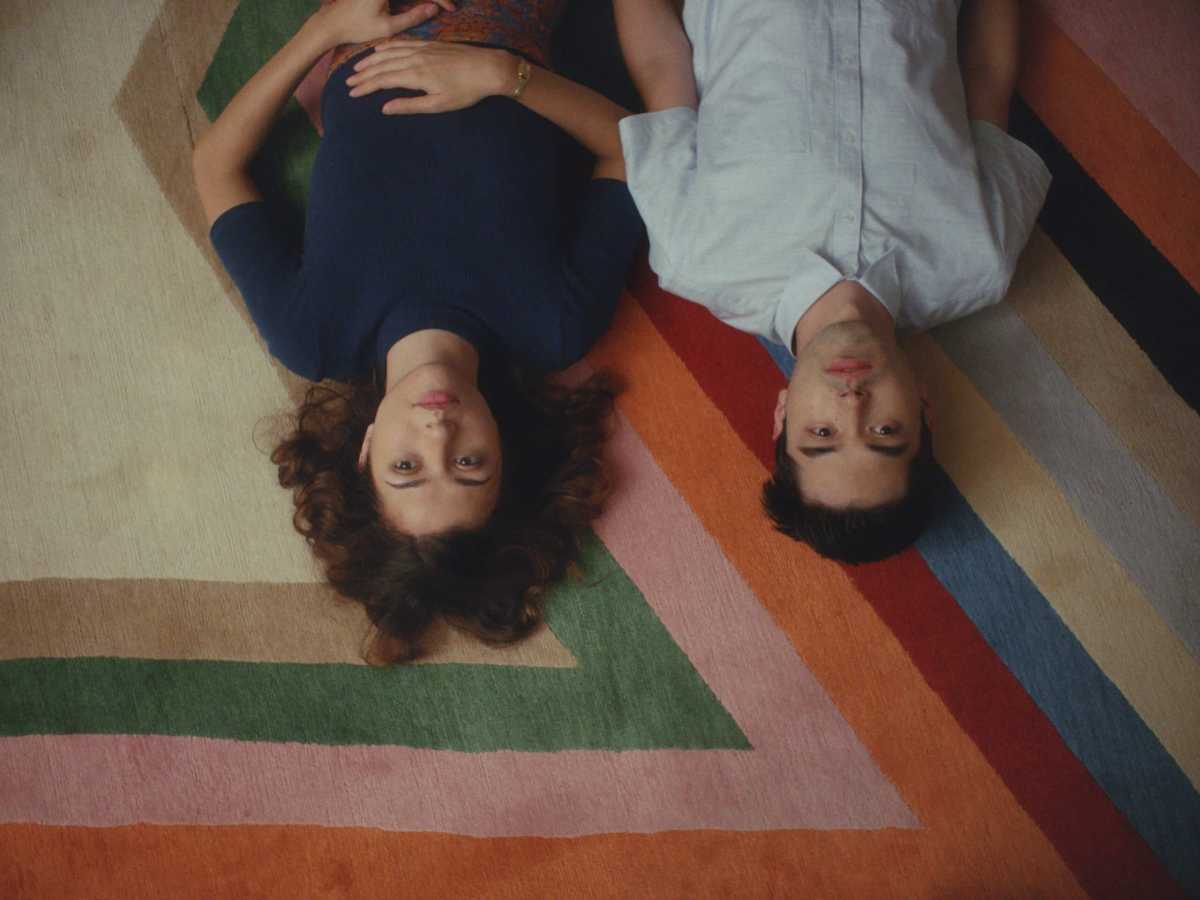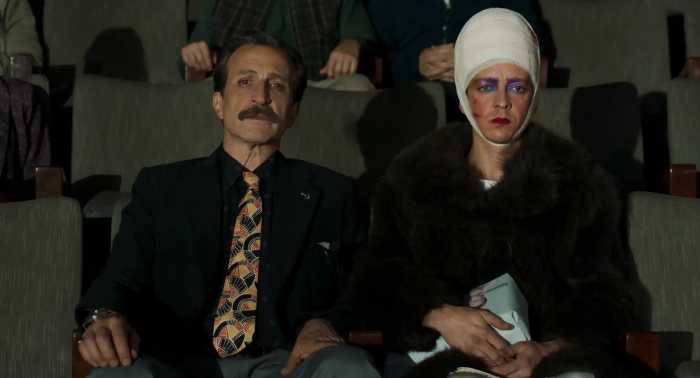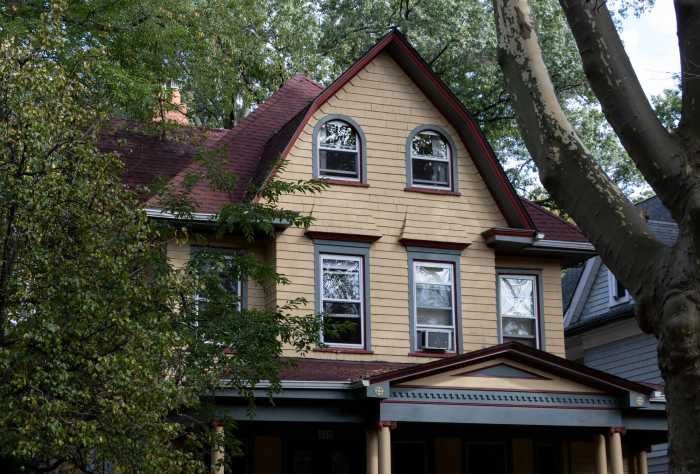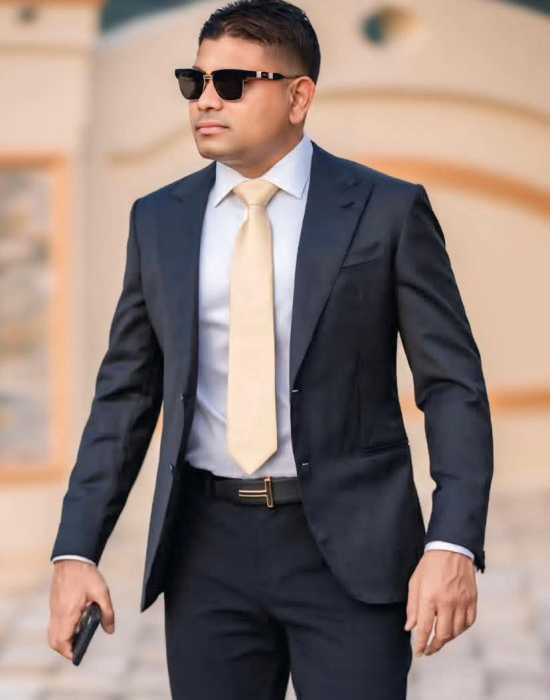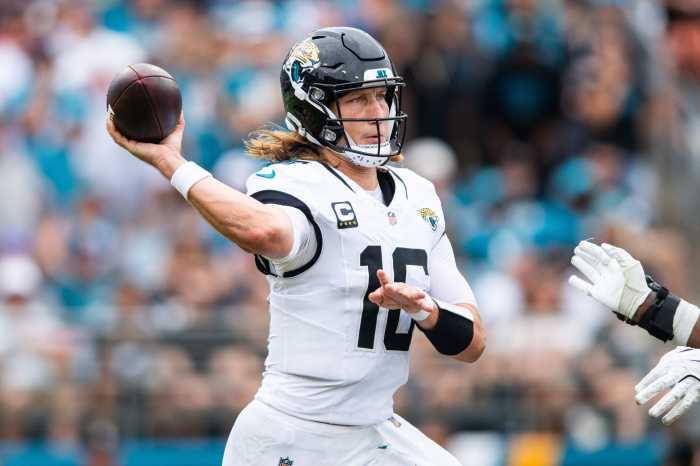Out queer writer/ director James Sweeney’s “Straight Up” is a terrific rom-com with a twist. Todd (Sweeney) drops a bombshell on his two friends Ryder (James Scully) and Meg (Dana Drori) when he tells them, “I think I’m not gay.” This nervous, hyper-verbose, OCD guy soon meets Rory (Katie Findlay), a budding actress who shares his hyper-verbosity, his love of “The Gilmore Girls,” and his desire not to have sex. (Among Todd’s many issues are his anxieties about bodily fluids.) They couple up in comfortable domesticity — Todd’s job is house-sitting in fabulous abodes — and figure out how to manage a relationship that almost everyone around them questions.
“Straight Up” wrings knowing laughs from gay stereotypes and pop culture references, past and present (there’s a fun running joke about Paul Newman). But Sweeney also infuses his film with poignant moments as well as perceptive insights about love and relationships. In addition, the filmmaker employs inventive visuals that frame the characters to comment on the action and their emotions.
“Straight Up” subverts the gay man/ straight girl relationship, which was Sweeney’s intent. In a recent phone interview, he explained, “I imagined the film to be a homage to and deconstruction of the romantic comedy genre and screwball comedies as well. It came from a place of wanting to put two lonely characters together who find safety in one another and tell it in a lighthearted, zippy way.”
Comparisons can be made to classic queer films like “The Wedding Banquet,” “Kissing Jessica Stein,” and “The Object of My Affection.”
Sweeney was not, however, looking to reinvent the queer rom-com genre. He merely wanted to explore the idea of a relationship between two people in love who face issues in their relationship in an authentic way but through a different lens.
The film benefits from a strong narrative approach that contrasts Todd and Rory’s stories; they complement each other. (Sweeney acknowledged that his characters “represent two different parts of my personality.”) But “Straight Up” also features strong visuals as well, from split screens to clever framing that allows Todd and Rory to have an argument sitting next to each other but filmed separately.
He explained about the visual approach, “We wanted things to feel real, if stylized and elevated, but not feel like they were stock or quirky characters. A lot of the story involves bifurcated vignettes. It is a dual protagonist story and the foundation of that is mutual respect. I wanted to give Todd and Rory equal weight in how we cover them visually. His style is static and minimalist, and she’s more chaotic and handheld. Together they blend, and we introduce movement. When you find yourself consumed in someone else’s world, their styles complement and fill one another.”
The comedy ranges from visual gags and wordplay and verbal dexterity to some more anxiety-driven moments. Sweeney observed that his film’s humor stems from “wanting there to be enough story and character for people who don’t find something funny to have something to latch onto. I don’t consider myself to be a comedy writer, so I may be harsh about what I find funny, but I don’t limit myself to one type of humor. Some jokes are for me, and if other people like them that’s great. This one joke when Todd talks to Meg and Ryder, and says, ‘My only two friends,’ is a reference to the fact that in rom-coms you don’t see all the character’s friends, usually just two.”
“Straight Up,” of course, plays with issues of sexuality and sexual identity as Todd questions who and what he wants from a relationship. The filmmaker appreciates the identity politics in his film and how Todd assumes he’s gay “because of his social conditioning” — his mannerisms and interests convince him he should be with men.
“The logline for the films is, ‘A gay twentysomething finds his intellectual soulmate in a twentysomething actress,’” Sweeney said. “But that’s reductive and sexuality is a spectrum, and where he starts is completely different than where he ends up. People coded me as gay before I knew I was gay myself. I’ve talked with gay men who are attracted to women, but they don’t say that for fear of being ostracized in the gay community. Gay is a political word, but it can also be restricting. The film takes place is in a post-heterosexist word, but that’s not a world we live in.”
Given that the dramatic tension in the film is built on the possibility of Todd and Rory ending up together romantically as well as companionably, Sweeney is cagey about whether he wants viewers to root for his protagonists to become romantically involved.
“I always hope that viewers will simultaneously root for them to be together and that they find other people,” he demurred. “That’s where the conflict comes from. It’s a messy area.”
“STRAIGHT UP | Directed by James Sweeney | Strand Releasing | Opens Feb. 28 IFC Center, 323 Sixth Ave. at W. Third St.; ifccenter.com

